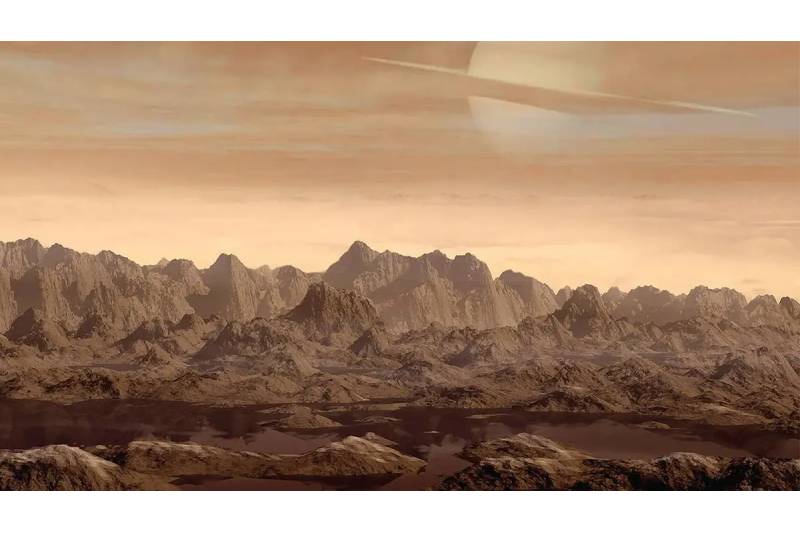Titan, Saturn’s largest moon, has craggy beaches that seem to have been sculpted by waves surrounding its lakes and methane seas. A NASA mission scheduled to launch in 2028 may provide a closer look at these features.
Other than Earth, Titan is the only body in the solar system with liquid on its surface. These liquids are lakes and oceans filled with hydrocarbons, such as liquid ethane, methane, and other organic compounds. Although rippling waves on these lakes have never been directly witnessed due to the haziness of Titan’s atmosphere, scientists believe that winds in Titan’s thick, nitrogen-rich atmosphere may cause them.
According to research conducted by Rose Palermo of the US Geological Survey in Florida and her colleagues, waves on the ocean’s surface have damaged Titan’s beaches over time, which explains why they are the way they are.
Palermo and her team examined the shores of Titan’s major lakes and seas, such as Kraken Mare and Ligeia Mare, and contrasted them with coastlines on Earth whose formation is known to us, including Lake Rotoehu in New Zealand, which was formed by waves eroding the shoreline over time. Subsequently, they developed other models of Titan’s oceans, where waves or simple edge dissolution were the sources of coastal erosion.
They discovered that the simulation with waves best captured the photos of Titan’s coastline, which resembled Earth’s coastlines that had been destroyed by waves.
“Although it’s tentative, I find it very exciting,” says Imperial College London’s Ingo Mueller-Wodarg. He claims that even though we haven’t seen the waves directly, this is extremely compelling proof that they do exist. It also supports a wealth of other indirect evidence, such as the existence of dune-like structures.
Mueller-Wodarg asserts that sending a spacecraft to the surface—like NASA’s planned Dragonfly drone mission, which is scheduled to launch in 2028—is the only way to conclusively confirm the existence of waves.
According to Palermo, studying Titan’s coastline may also help us learn more about how the planet’s initial beaches originated. “Titan is a unique laboratory for coastal processes because it is untouched by people and plants. It’s really a place where we can investigate the coast as a physical process alone.”
